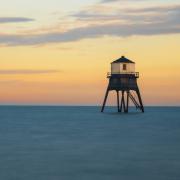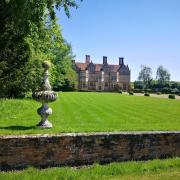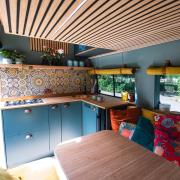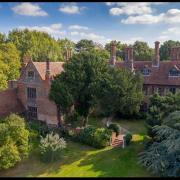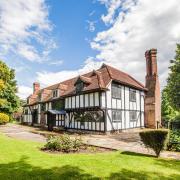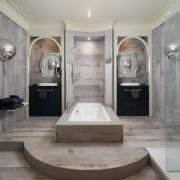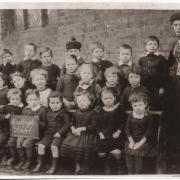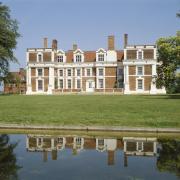Discover the fascinating background of this impressive Queen Anne period country house and estate in beautiful Belchamp Walter.
Belchamp Hall, a Queen Anne mansion situated on the Essex Suffolk border, has been in the same family since 1611 when it was bought by John Raymond. Prior to this, the manor of Belchamp was owned by the de Vere family, also known as the Earls of Oxford. The de Veres held swathes of land in the medieval era including Castle Hedingham, White Colne and Lavenham. Between the medieval period and the early seventeenth century, Belchamp Hall was owned by Sir Roger Wentworth and many others before him. Sir Roger’s grandson John sold the manor to John Raymond in 1611.

John Raymond’s son Oliver was an MP for Essex during the two protectorate parliaments in the 17th century and married Francis Harris, the daughter of Sir William and Lady Harris from Shenfield. They lived in the previous hall in the 1600s and Elizabethan portraits of the couple hang either side of the door today. Francis was essentially an heiress and brought with her money and important relics from the Spanish Armada including an iron treasure chest with its original huge key that her father Sir William captured. Sir William Harris was likely either a Commander or Officer during the Spanish Armada. Also acquired during the Armada is a fabulous triptych featuring the Holy family which is in excellent condition owing to the fact that it can be folded back, thus preserving it. The current owner, Charlie Raymond, explained that during the Spanish Armada it may have been used as an altarpiece that could be quickly and efficiently folded away after communion before preparing for ensuing battle!

In 1720 John Raymond III went about replacing the sixteenth century manor house and built the glorious red brick house that we see today. However, as Charlie Raymond is at pains to point out, the timbers were not just simply binned like they were in the majority of these projects, they were upcycled and incorporated into the new house. The oak and chestnut panelling in the dining room is thought to have come from the original house and apparently lots of the timbers were used in the attic. This was to be the first country house project that architect John Taylor and son, who hailed from South Essex, had embarked on. The end result? A stunning house with nine bays including a parapet with views across the valley of the Belchamp Brook to the village of Bulmer.

On the first floor at Belchamp Hall are two Bay windows at the north and south of the house. These were added to the house in the Georgian era to form powdering chambers, when hair powdering and wigs were the height of fashion. Elsewhere are several family portraits by Thomas Gainsborough who only lived down the road in Sudbury. Thomas Gainsborough was one of the most important portraitists of the 18th century.
The gardens, also updated by John Raymond III, are still laid out in a similar design to this day. Surveys existed back in those days and John Raymond commissioned one prior to the purchase of the property which details the existence of a dovecote, a garden, an orchard and a rectangular pond. In 1741 the lordship of the manor as well as some land were sold to Thomas Ruggles, a clothier from Braintree who went on to buy nearby Spains Hall in Finchingfield but the manor house that is Belchamp Hall was not included in the sale.

The next member of the family to inherit Belchamp Hall was The Rev Samuel Raymond. He and his wife Margarette Brook Bridges laid out a park to the south west of the gardens. When Rev Raymond passed away in 1825, Samuel Millbank Raymond moved in and was known as Squire Raymond. After his passing Samuel was succeeded by yet another man of the cloth, his second son named Rev John Mayne St Clere Raymond. It was this member of the family who set about recovering the Lordship of the Manor of Belchamp in 1865, and in 1871 extended the house by creating a new wing as well as building a castle folly in the garden, apparently to stop some of the reflection of glass from nearby Gestingthorpe Hall. Gestingthorpe Hall was famously the home of the arctic explorer Captain Oates. Oates, who was suffering from frostbite and gangrene, didn't want to be a burden to the rest of his team and said before walking from his tent into a blizzard of -40 degrees, ‘I’m just going outside and may be some time.’ He died a hero.

The 19th century extension at Belchamp Hall was reduced by Rev John Mayne St Clere’s grandson Samuel Philip St Clare Raymond. Samuel and his wife Mabell Astell set about creating intimate gardens close to the house that were enclosed by yew hedges in the early twentieth century. The 14th century church of St Mary lies at the bottom of the drive on the other side of the small road. Inside you will find several medieval wall hangings of note. The church once featured in the series Lovejoy when the loveable rogue was due to get married. Belchamp Hall also featured heavily in the series as the fictional home of Lady Jane, Felsham Hall.
Today there are several holiday cottages available to rent at Belchamp Hall as well as guided tours that are booked in advance.
belchamphall.com








